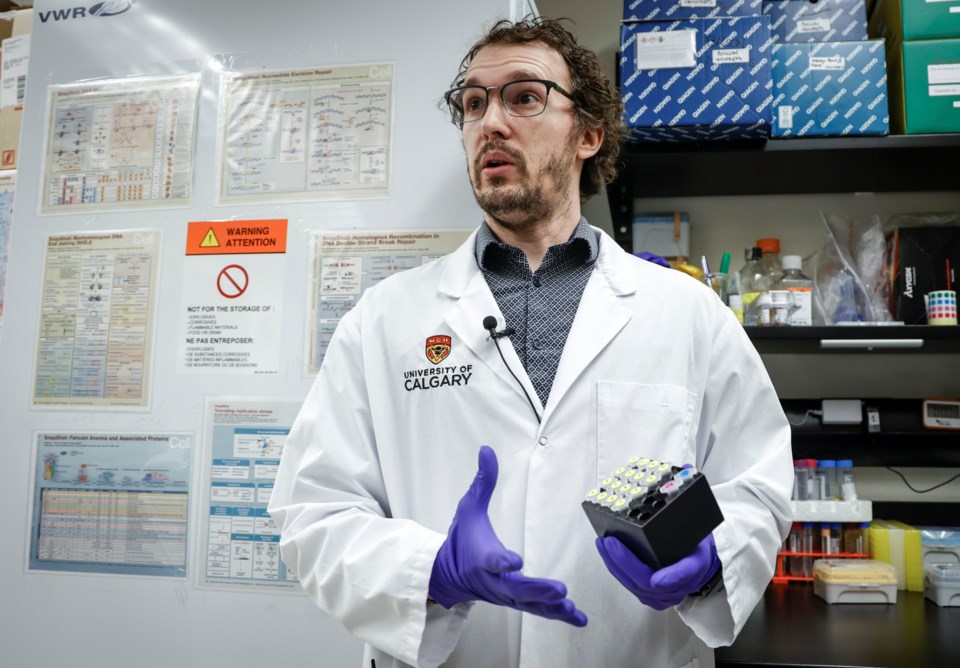CALGARY — A Calgary researcher has developed a new tool that can detect the presence of genetic mutations within hours instead of weeks.
Pierre Billon, an associate professor with the Cumming School of Medicine at the University of Calgary, said he was frustrated with how slow and costly it was to get genetic analysis done at specialized private labs.
"We’ve developed a method which is so simple to implement and use that any lab anywhere in the world can readily establish their own kit to achieve a same-day analysis of genetic mutations for a few cents per sample," Billon told reporters Tuesday.
Billon, along with research associate Lou Baudrier and visiting student researcher Orléna Benamozig, developed the system, called One-pot DTECT.
It contains multiple enzymes and unique DNA fragments that reveal and detect genetic signatures. The small metal box contains 16 vials of DNA fragments and another two of enzymes.
Billon says the kit can be used to diagnose a wide range of genetic mutations for blood and other disorders including sickle cell anemia and cystic fibrosis.
The methods used to test it are published in the journal Cell Reports Methods.
"It can be used in the laboratory for routine day-to-day experiments and for the diagnosis of genetic mutations in patients," Billon said.
He said the goal was to give researchers and doctors a diversity of tools.
"The visual detection requires very limited equipment, and this is the type of detection that can be done in the wild if needed or in a very small laboratory setting."
Dr. Nicola Wright, a pediatric hematologist and immunologist at the Alberta Children’s Hospital, assessed the accuracy of the test. One of her areas of expertise is blood disorders, such as sickle cell anemia, which is caused by genetic mutations.
Wright said all newborns in Alberta are checked for sickle cell at birth and any abnormalities are usually reported within 96 hours. But she says a subsequent blood test to confirm sickle cell is required and the results can take two to four weeks.
"With the test that Dr. Billon has developed, we can do (it) directly off the original blood spot, and we could have results within a few hours," she said.
Wright said early treatment is important when it comes to newborns with sickle cell.
"In infancy, they're at a really high risk of bacterial infections so we put those babies on Amoxil or another antibiotic to keep them from getting that bacterial infection and that's been shown to reduce the mortality in the first year of life."
Billon said there have been discussions with a number of companies about selling the kits but said all the information is out there and it would be simple and inexpensive for labs to make their own.
"It just requires a specific DNA fragment to provide a sequence and the enzymes that can be bought from suppliers," Billon said.
He said there has been a lot of interest and hopes it could end up saving lives.
"It's early to say that, but it's true that the faster you can detect the presence of mutations the faster you can get patients on treatments."
This report by The Canadian Press was first published February 6, 2024.
Bill Graveland, The Canadian Press




